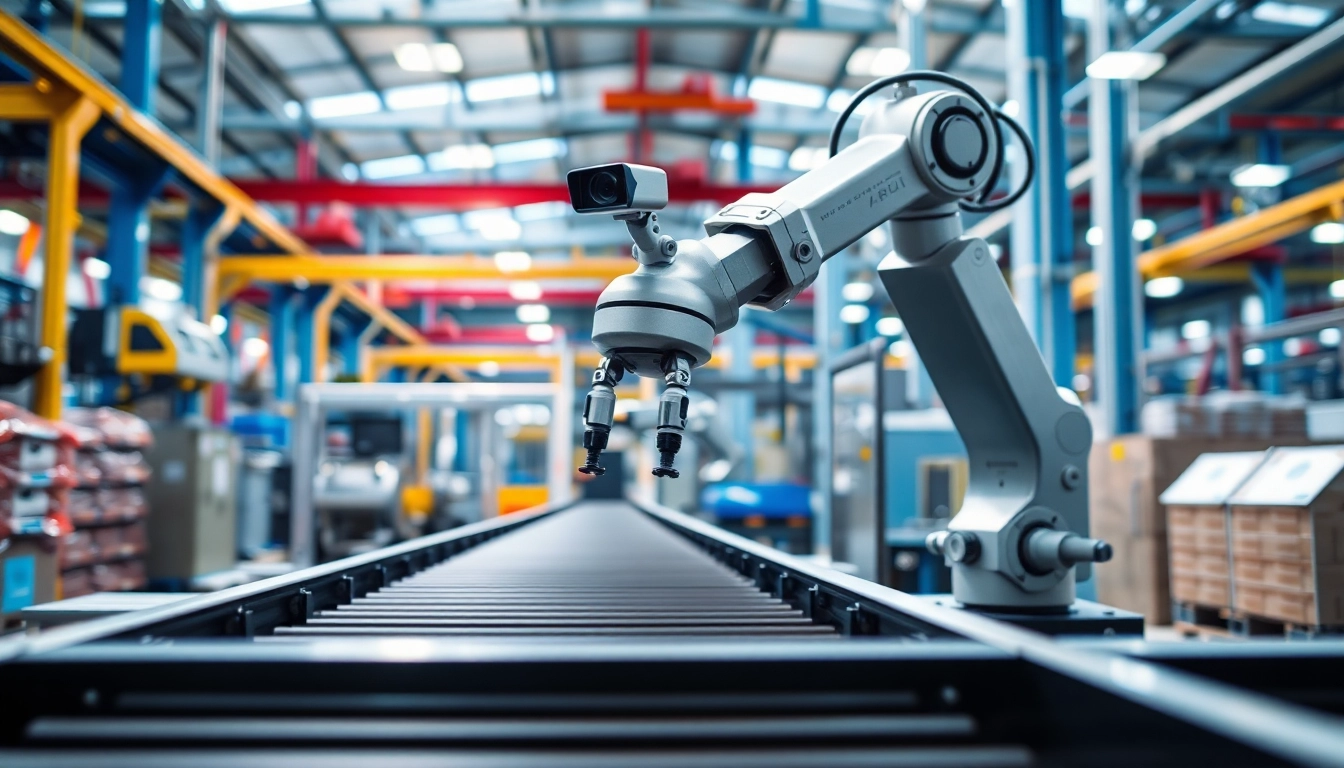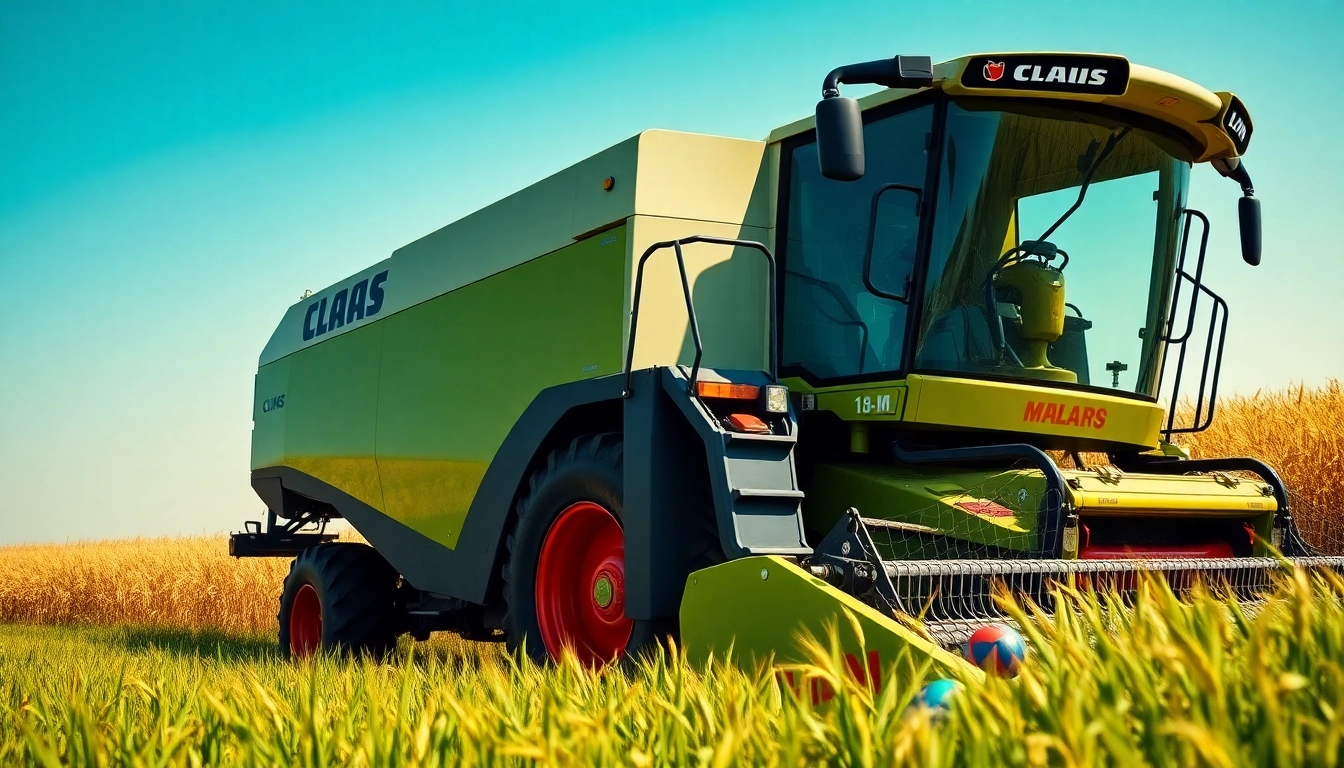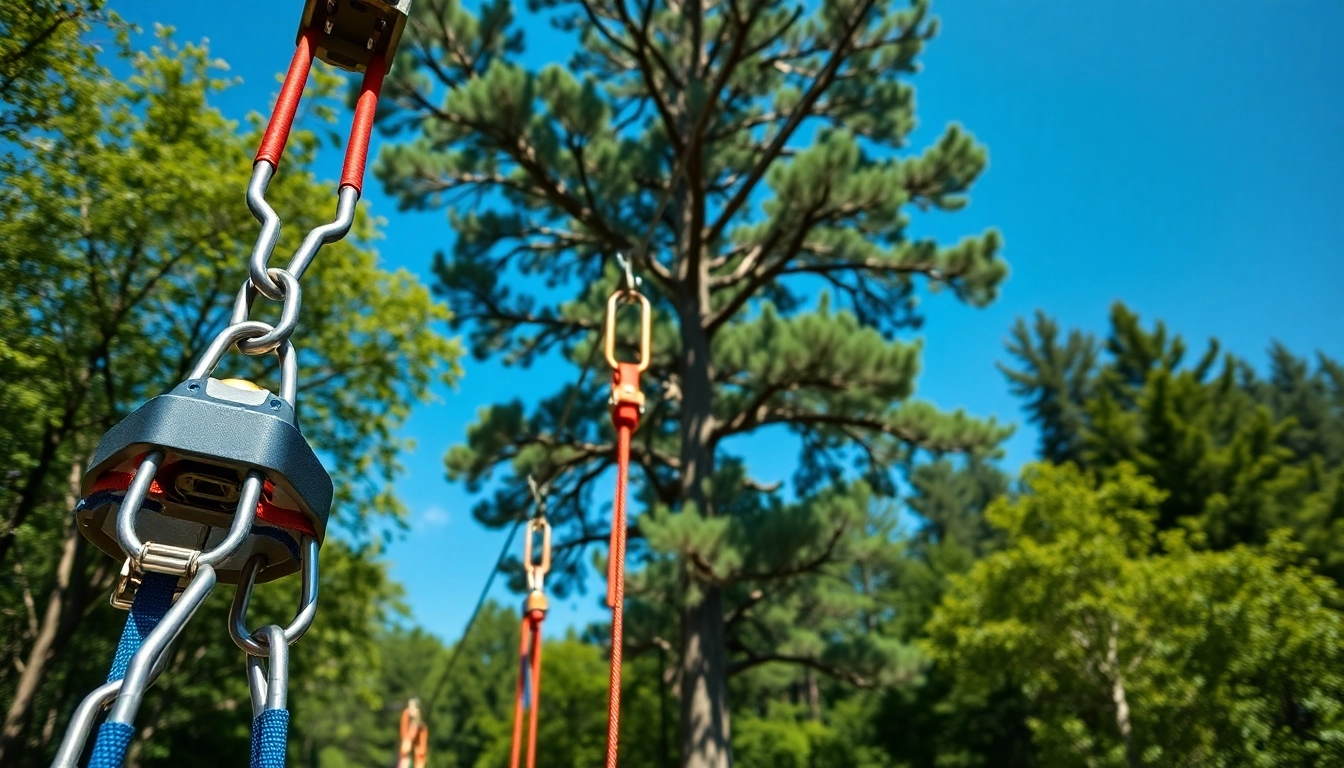
What is Machine Vision?
Definition and Overview of Machine Vision
Machine vision refers to the technology and methods employed to enable machines to interpret visual information from the environment, resembling the human visual perception. It involves the use of cameras, sensors, and specialized software to capture, process, and analyze images for automation purposes. The integration of machine vision is imperative in a variety of fields, particularly in manufacturing, where it drives improvements in efficiency and quality control.
Core Components of Machine Vision Systems
Machine vision systems are primarily composed of three essential components: imaging devices (cameras), processing units (computers), and software algorithms. Let’s delve deeper into each of these elements:
- Cameras: The backbone of any machine vision system, cameras capture the visual data. They can be 1D (line scan), 2D (area scan), or 3D cameras depending on the required analysis.
- Processing Units: This includes both hardware (such as CPUs, GPUs) and software that helps interpret the captured images. Advanced processing powers enable real-time data analysis critical for quick decision-making.
- Software Algorithms: Machine learning algorithms often assist in image analysis, allowing for tasks such as defect detection, object recognition, and pattern identification.
How Machine Vision Works: The Process Explained
The functioning of machine vision can be broken down into several key steps:
- Image Acquisition: Cameras capture images of the target object. The lighting conditions and camera specifications significantly impact the quality of the acquired images.
- Image Processing: After capturing images, software algorithms process them to enhance image quality, remove noise, and identify relevant features.
- Feature Extraction: This involves analyzing the processed images to detect specific characteristics, such as edges, shapes, or colors that may indicate defects or anomalies.
- Decision Making: The system evaluates the extracted features against predefined criteria to classify, measure, or label the objects, driving automation in tasks like sorting or quality inspection.
Applications of Machine Vision
Industry Utilization of Machine Vision
Machine vision is transforming industries, especially manufacturing. Key sectors utilizing this technology include:
- Automotive: In automotive production, machine vision helps in quality inspection of components and overall assembly line efficiency.
- Electronics: It aids in testing circuit boards, ensuring proper assembly, and detecting risk of defects at early stages.
- Food Processing: Machine vision ensures product quality and compliance with safety standards by detecting contaminants and assessing packaging accuracy.
Machine Vision in Quality Control and Inspection
Quality control is perhaps the most significant application of machine vision. Through automated inspections, it ensures consistent product standards, reducing rework and waste. Common applications include:
- Defect Detection: Machine vision systems can quickly identify defects on the production line that would be difficult for the human eye to spot.
- Measurement: Precise measurement of objects (e.g., dimensions, angles) can be achieved, facilitating quality assurance processes.
- Labeling and Tracking: Verifying correct labels and tracking products through production stages is essential for logistics and quality management.
Emerging Applications in Autonomous Systems
Autonomous systems, such as drones and self-driving vehicles, are also leveraging machine vision. These applications require systems that can perceive their environment accurately to make navigational decisions. Machine vision enables:
- Obstacle Recognition: Drones can identify and avoid obstacles during flight, minimizing accidents.
- Navigation: Self-driving cars utilize machine vision for lane detection, traffic signal interpretation, and recognizing pedestrians.
- Mapping and Surveying: Drones employ machine vision to create highly accurate maps for various applications like agriculture and urban planning.
Comparing Machine Vision with Computer Vision
Key Differences Between Machine Vision and Computer Vision
While both machine vision and computer vision involve the processing of visual information, specific distinctions exist:
- Machine Vision: Primarily focused on industrial applications, automation, and processes such as inspection and measurement.
- Computer Vision: Encompasses broader applications including facial recognition, object detection in videos, and more social interactions.
Integration of AI in Machine Vision Technologies
The integration of artificial intelligence into machine vision technologies is driving advancements in automation. AI enhances machine vision systems through:
- Improved Accuracy: Deep learning algorithms improve the system’s ability to detect various defects and patterns over time.
- Real-time Analytics: AI can process data at high speeds, allowing for quick response times to anomalies on the production line.
- Adaptive Learning: Machine vision systems learn from previous data, adapting to new variables without human intervention.
Case Studies: Success Stories in Industry
Several companies have successfully implemented machine vision systems with remarkable outcomes:
- Automotive Manufacturer: A leading car manufacturer used machine vision for final inspections, resulting in a 30% reduction in defects.
- Food Industry: A food processing company implemented machine vision for quality checks, achieving a 95% reduction in rework costs.
- Electronics Manufacturer: An electronics firm utilized machine vision for PCB inspections, speeding up assembly lines by 20%.
Best Practices for Implementing Machine Vision
Assessing Your Needs for Machine Vision
Before implementing a machine vision system, organizations must carefully evaluate their specific needs. Steps include:
- Identify Objectives: Clarify what you hope to achieve with machine vision: improved quality, increased speed, or reduced labor costs.
- Conduct a Feasibility Study: Analyze current processes to determine the best integration points for machine vision.
- Test and Validate: Conduct pilot tests to evaluate system performance before rolling out the technology on a broader scale.
Choosing the Right Machine Vision System for Your Business
Selecting an appropriate system can be daunting. Factors to consider include:
- System Specifications: Ensure that the camera resolution, processing speed, and features suit your application needs.
- Scalability: Opt for systems that can grow with your business needs.
- Support and Training: Choose providers that offer robust training programs and technical support to assist your teams.
Common Challenges and Solutions in Deployment
Even with careful planning, machine vision deployment comes with challenges such as:
- Integration Issues: Machine vision systems should seamlessly integrate with existing manufacturing processes. Conduct thorough testing during setup to ensure compatibility.
- Cost Concerns: High initial costs can deter implementation. Consider long-term savings and ROI when evaluating costs.
- Staff Training: Invest in training for staff on how to operate and maintain the systems to ensure optimized usage.
Future Trends in Machine Vision Technology
Advancements on the Horizon for Machine Vision
As technology evolves, so do the capabilities of machine vision. Upcoming trends include:
- Enhanced AI Integration: Continued advancements in AI will drive better anomaly detection and predictive maintenance capabilities.
- Cloud Computing: Utilizing cloud services will enable more powerful processing of visual data, facilitating real-time analytics across multiple locations.
- Edge Computing: Future systems may process data closer to where it is generated, reducing latency and bandwidth issues.
Potential Impact of AI and Machine Learning
The potential impact of AI and machine learning on machine vision is vast:
- Automation Expansion: AI-driven machine vision can automate tasks that were previously impossible or impractical to automate.
- Reduced Downtime: Ongoing learning algorithms allow systems to predict faults before they occur, minimizing downtime.
- Improved Customization: AI allows for machine vision systems to adapt to unique production conditions, enhancing productivity.
How Machine Vision Will Shape Future Industries
The implications of machine vision stretch far beyond traditional industrial applications. Potential future innovations include:
- Healthcare: Machine vision as a diagnostic tool could lead to enhanced imaging techniques and better patient outcomes.
- Agriculture: Utilizing drones equipped with machine vision to provide precise data on crop conditions and automate tasks like planting and harvesting.
- Smart Cities: Machine vision integrated into traffic systems can enhance city management, optimizing traffic flow and safety.








